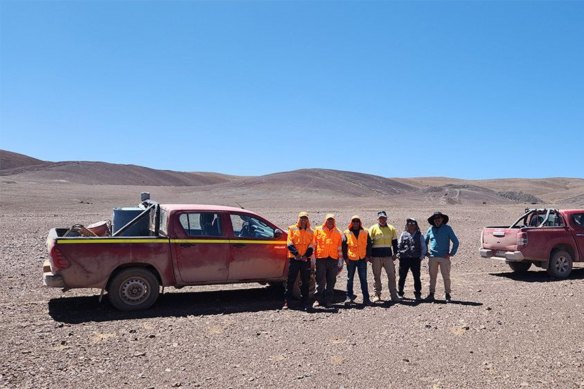- Sponsored
- Business
- Companies
- Bulls N' Bears
Geophysics unleashed for Pan Asia copper hunt in Chile
Brought to you by BULLS N’ BEARS
By Doug Bright
Pan Asia Metals has today launched an induced-polarisation (IP) geophysical survey at its Rosario project in Chile in a bid to detect, map and classify “Manto-style” copper mineralisation prior to maiden drilling.
Manto-style derives its name from a type of loose, sleeveless clothing, like a shawl or blanket that covers a person’s body. In geology, it refers to mineralisation forming a blanket-like body between bedding planes, or within rock strata.

Pan Asia Metals has commissioned Quantec Geophysics to undertake a geophysical survey at the company’s Rosario copper project in Chile.
The company views the Rosario project, which stretches for some 25 square kilometres, as a highly-prospective, but significantly underexplored Manto-style copper-silver project.
The style is common throughout northern Chile and has been the source of significant historical and current copper production. The biggest examples have recorded historic productions and/or mineral resources of more than 200 million tonnes at grades upwards of 1 per cent copper, with silver credits.
‘We have a high level of confidence that the IP survey will produce interesting results.’
Pan Asia Metals managing director Paul Lock
Pan Asia’s geophysical program was foreshadowed late last month when it revealed it had commissioned Canadian-based, but globally-operating, geophysical consultants Quantec Geoscience to undertake the work.
The work essentially involves testing for sub-surface conductors associated with copper mineralisation at Rosario, which sits just 10km north of Codelco’s famous El Salvador copper mine and is one of the most recent high-potential, early-stage copper projects in Chile’s Central Copper Belt.
Pan Asia Metals managing director Paul Lock said: “As previously announced, this is the first-ever IP survey at Rosario. Given the presence of small-scale historical mines, in conjunction with the high-grade rock-chip and channel samples, and Rosario’s proximity to the famous El Salvador mine 10km to the south, we have a high level of confidence that the IP survey will produce interesting results.”
Rosario’s location puts it in the box seat as one of South America’s most strategically-situated projects, as it lies about 100km by road from Chilean State mining firm ENAMI’s El Salado oxide and sulphide copper ore processing plant, while Codelco’s Porterillos copper smelter sits just 40km south its El Salvador mine.
The company is proposing 19 IP survey lines for about 27 line kilometres, employing conventional direct current induced-polarisation (DCIP) using a pole-dipole (P-DP) array. It believes that configuration – with a single transmitting electrode (the pole) and a pair of closely-spaced, oppositely-charged electrodes (the dipole) – will provide high-resolution resistivity and chargeability imaging to the company’s desired depth of investigation, which at this project is from surface to about 300m depth.
The survey will begin at the southern end of the Rosario East trend (RET) and continue northward on east-west lines spaced about 400m apart. The significance of the RET trend is that it hosts the old Salvadora and Royal Mines where research has unearthed many rock-chip samples carrying strong copper grades.
When the IP survey has been completed on the RET, it will progress to the Rosario Central (RCT) and Rosario West trends (RWT), before winding up in about a fortnight, with a final report expected soon afterwards.
Pan Asia has also kicked off geochemical exploration of the Rosario ground, with the company’s chief geologist David Hobby in the field.
Keen to begin its maiden reverse-circulation (RC) drilling at Rosario, management is also on the hunt for Chilean-based contractors, with a view to triggering its proposed program of about 2500m in November to test priority copper targets highlighted by the geophysics.
Is your ASX-listed company doing something interesting? Contact: mattbirney@bullsnbears.com.au